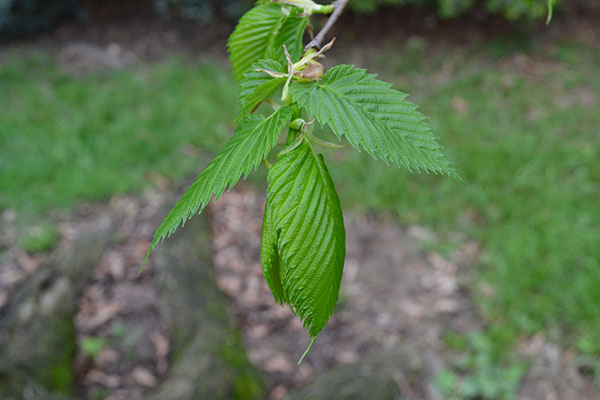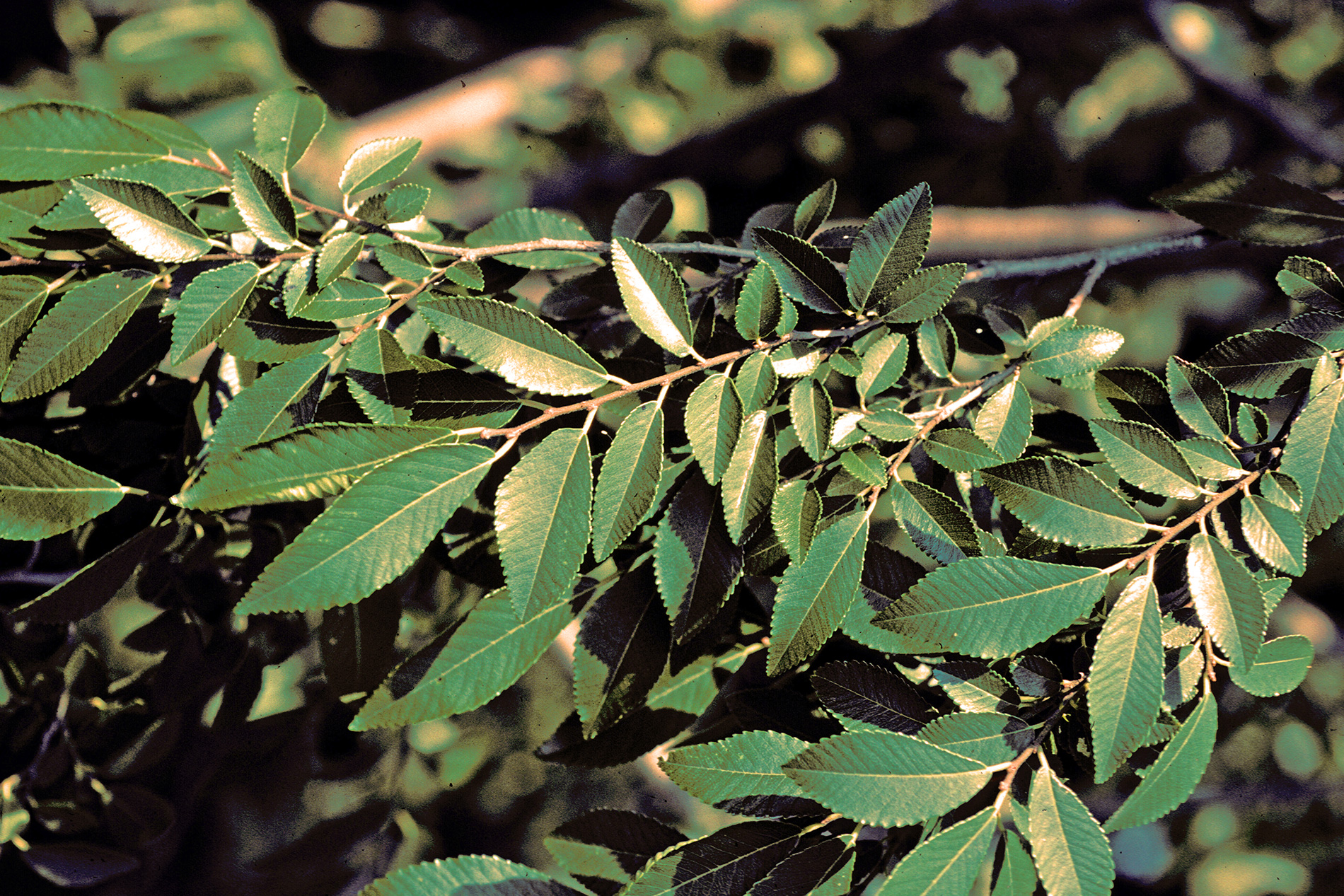Ulmus americana
American Elm
Found throughout the East coast and as far west as the Rockies.
Tall, spreading tree, thick trunk
Commonly found in rich woodlands, ravines, and lowlands; perfers full sun and moist soils.
This used to be a common landscaped lawn tree. Still admired for its grandeur size and yellow fall color.
Alternate, simple, oblong-obovate, serrated edge, pubescent or almost glabrous. Turns to yellow in fall.
Buds are imbricately scaled, ovate-conical shape. No terminal bud. Flower buds are stout and much larger.
Dark gray, deep furrows and scaled patches overlapping each other.
Green-red in March, not very showy.
Rounded samaras that are notched, flowers are perfect, and in fascicles of 3 or 4 in early spring.
Seed or cuttings.
Many with less susceptability to Dutch elm disease such as 'Liberty', 'Delaware #2', 'Princeton', and 'Valley Forge'.






